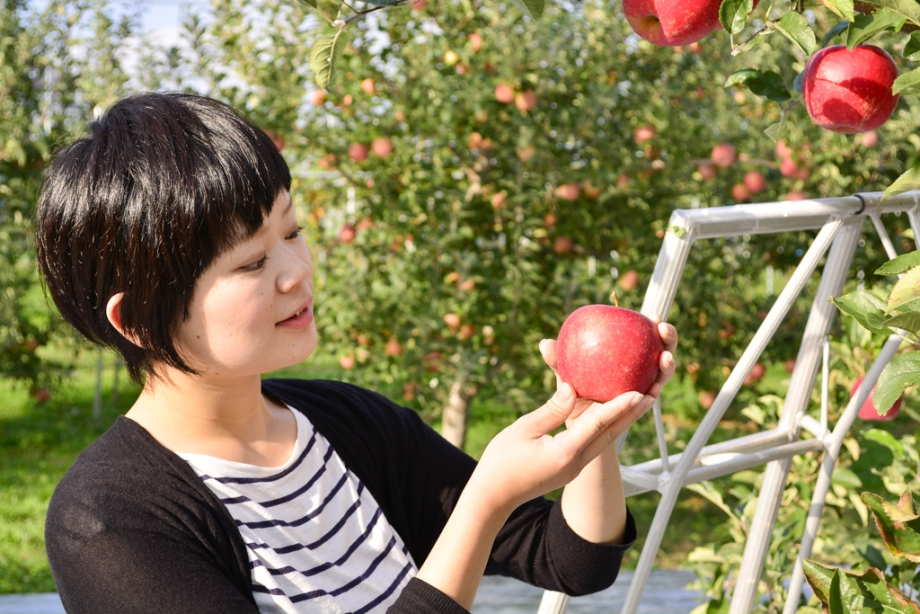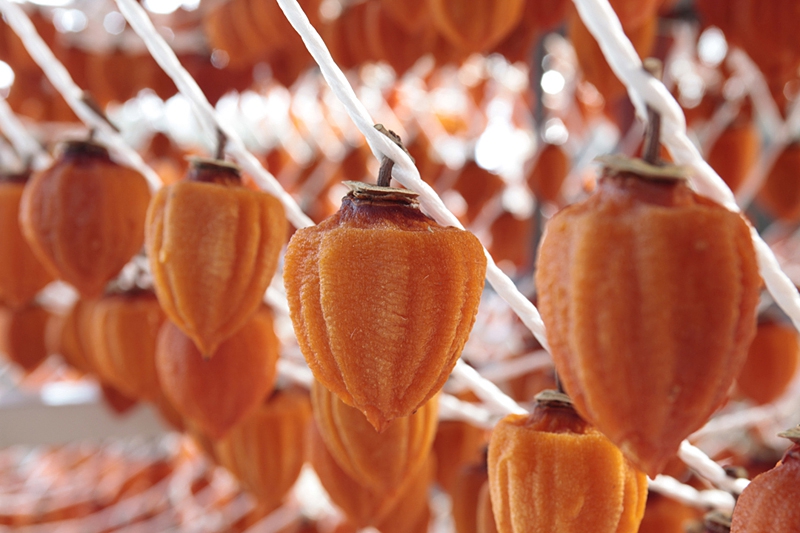Fruits of Fukushima
Fukushima is renowned for its delicious fruits, and a wide variety of direct-sale farmer's fruit stalls and 30 minute all-you-can pick tourist orchards can be found across the prefecture. Check this page for information about fruit-picking specifically in Fukushima City.
Fruit Varieties
 |
PeachesFukushima is the nation's second largest producer of peaches, which is why peaches can be said to be the prefectural fruit of Fukushima. Fukushima peaches have a gentle pink color, a delicate sweet aroma, and a good nutritional balance of vitamins and minerals. Peaches contain a lot of pectin, which removes toxins, thus cleansing the body. Trees laden with peaches can be spotted mainly in the Fukushima City and Date areas. Peaches are grown in direct sunlight, and thus have a rich taste and attractive appearance. A light sensor is used to measure their sugar content and hardness, with only carefully selected peaches being sold. |
 |
GrapesFukushima is a major grape-producing prefecture, growing many types including the well-known 'Kyoho' and 'Takao' varieties. Soaking up the abundant sunlight, each grape is packed full of sweetness. 'Azuma shibuki' is an early-maturing variety developed in Fukushima Prefecture, which can be picked from early August. This is a large, seedless grape, sweet with low acidity, with softer flesh than the 'kyoho' variety. |
 |
ApplesApples from Fukushima have a range of distinctive tastes and external appearances, since they are grown under direct sunlight, unlike apples from other areas of Japan, which are grown in bags. Thanks to Fukushima's warm climate, the first apples are ready to eat in late August, earlier than in other prefectures, and can be enjoyed through December. Fukushima apples are sweet, with a rich taste. The juiciness, perfect balance between tartness and sweetness, and crisp bite of Fuji apples make them the most produced variety in Japan. |
 |
StrawberriesConsidered a winter fruit in Japan, strawberries go on sale from as early as December, lasting right through to May. A distinctive feature of Fukushima strawberries is their refreshing taste even after the weather has turned warmer. As well as being delicious, strawberries are also high in vitamin C, with 5 to 6 berries providing the required daily dose for an adult. You can enjoy picking strawberries at a number of locations throughout the prefecture. |
 |
Nashi PearsFukushima Prefecture is one of Japan's major producers of nashi pear, and is known for varities including 'kosui', 'hosui', and 'nijisseiki'. Enjoy the refreshing sweetness and distinctive texture of nashi. The weighty fruit are bursting with juiciness, and have an appetizing balance between sweetness and tartness. |
 |
PersimmonsCome autumn, persimmons are picked in the Aizu region. 'Shibugaki' persimmons are famous for their astringency, but this is somewhat reduce by steeping the fruit in distilled spirit. Persimmons are ready to eat from the end of October through to mid-November. 'Aizu Mishirazu-gaki' are a variety of persimmons known throughout Japan. These are famous for the sheer quantity of fruit on each tree, and the delicious taste that keeps people coming back for more. These are only grown in a particular part of the Aizu region, and it is the combination of the hot summers with the supply of cold underground water that brings us these soft, sweet delicacies. |
 |
Dried PersimmonsDried persimmons are a traditional delicacy prepared using a unique method. First, persimmons are fumigated in sulfur and then dried. Despite being dried, these persimmons retain a relatively high water content as well as their original sweetness, which makes them taste somewhat raw. While dried persimmons can be enjoyed as is, they can also be eaten chopped finely and mixed with yoghurt. If hung in a cool, well-ventilated location or stored in a refrigerator, dried persimmons can be kept from three to six months. |
Fruit Calendar
